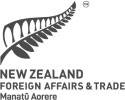Weekly Global Report:
On this page
Trade and Economic Updates
Domestic
Reserve Bank of New Zealand Cuts Official Cash Rate to 2.5%
The Reserve Bank of New Zealand (RBNZ) has implemented a 50-basis-point reduction in the official cash rate, bringing it to a three-year low of 2.5 percent. This move aims to stimulate economic activity amid an economy characterised by slow growth, declining business confidence, and high living costs. The RBNZ signalled openness to further cuts if necessary to maintain inflation around the 2 percent target. Read more here(external link).
Establishment of Financial Policy Committee to Enhance Prudential Oversight
In response to a recent parliamentary inquiry into banking competition, the RBNZ announced plans to establish a new Financial Policy Committee (FPC). The FPC will enhance the RBNZ's authority in setting prudential regulations for banks and making decisions on mortgage lending ratios. This initiative aims to strengthen the financial policy framework and increase competition. Read more here(external link).
Global
IMF Chief Warns of Economic Uncertainty: “Buckle Up”
International Monetary Fund (IMF) Managing Director Kristalina Georgieva has cautioned that while the global economy remains resilient — with growth projected around 3.0 percent in 2025 — mounting uncertainties tied to trade conflicts, inflation, and geopolitical risks could yet destabilise momentum. Georgieva urged policymakers to prepare for shocks, emphasising that fragile confidence and elevated valuations are warning signs of deeper vulnerabilities ahead. Read more here(external link)
South and Southeast Asia
South Asia Growth Strong but a Slowdown Looms
The World Bank’s South Asia Development Update projects regional growth of 6.6 percent in 2025, buoyed by resilient domestic demand and policy support. However, the outlook softens for 2026, with growth expected to slow to 5.8 percent due to spillovers from global weaknesses and elevated trade policy uncertainty. The report underscores that reforms in trade openness, technology adoption, and labour mobility are key to bolstering long-term growth and job creation. Read more here(external link)
East Asia & Pacific: Resilient but Facing Structural Headwinds
In its October 2025 East Asia and Pacific Economic Update, the World Bank forecasts regional growth at 4.8 percent, down only slightly from 5.0 percent in 2024. Vietnam leads with projected growth of 6.6 percent, while Pacific Island countries are expected to grow at 2.7 percent. Despite strong aggregate performance, the update flags structural challenges. Much of the recent job growth is in low-productivity services, youth unemployment remains high, and stronger reforms are needed to unlock private capital and innovation. Read more here(external link)
New Zealand and Singapore Deepen Ties with Comprehensive Strategic Partnership
Prime Minister Luxon and Singapore Prime Minister Lawrence Wong launched an upgrade of the New Zealand and Singapore relationship by signing a Comprehensive Strategic Partnership (CSP), marking a significant step-change in bilateral cooperation. The agreement expands collaboration across six pillars – trade and economic, the green economy and climate change, defence and security, technology and innovation, supply chains and connectivity, and people links. Both countries reaffirmed their shared commitment to open markets, resilient supply chains, and rules-based trade in the Indo-Pacific region. Read more here(external link)
New Zealand and Singapore Launch Strategic Food Partnership & Conclude AOTES
As part of the newly launched CSP, two major initiatives focus on the food security partnership between New Zealand and Singapore. New Zealand and Singapore launched a Strategic Food Partnership to deepen cooperation on agrifood trade, innovation, and supply-chain resilience. The partnership will include structured work programmes, streamlined regulatory processes, and joint meetings between New Zealand’s Ministry for Primary Industries and Singapore’s sustainability and food agencies. In addition, the two countries announced the substantive conclusion of negotiations on an Agreement on Trade in Essential Supplies (AOTES). The agreement builds on trust developed during the COVID-19 pandemic, when both governments committed to the maintain the flow of essential goods. This new agreement ensures that in times of crisis, goods like food and fuel continue to flow. Read more here(external link)
Feedback
We welcome feedback from New Zealand exporters on this report and invite requests for reporting from New Zealand’s network of Embassies and High Commissions. If you have suggestions on a topic you would like to hear more about, or to subscribe to this weekly update, you can sign up here(external link) or email us at exports@mfat.govt.nz
Market reports released this week
- Read the previous global economic round-up
- Poland's Supplement Boom: Strategic Insights for Kiwi Market Exporters
A full list of global economic round-ups can be found here(external link)
If you would like to request a topic for reporting please email exports@mfat.govt.nz
External links
The following links may provide useful information to businesses:
NZTE’s website(external link) and their myNZTE(external link) provides a range of insights and tools available to support New Zealand exporters.
The Treasury releases a weekly economic update(external link) every Friday. Stats NZ has published a data portal(external link) with near real-time economic indicators.
MBIE publishes a sector reports series(external link) which provides regularly updated reports on all industry sectors that make up the New Zealand economy. These include official economic data and the challenges and opportunities that face New Zealand’s industry sectors.
Business.govt.nz(external link) provides tools and advice from across government to save small businesses’ time and help make the business a success.
MFAT has created a tariff finder(external link) which is designed to help goods exporters and importers maximise benefits from New Zealand’s Free Trade Agreements and compare tariffs in 136 other markets.
The all of government Trade Barriers(external link) website can be used to register any trade barriers experienced or issues exporting to an offshore market. Queries can be sent via the website or through the MFAT Exporter Helpline 0800 824 605. Enquiries will be sent to the government agency best placed to answer.
Tatauranga Aotearoa Stats NZ provides official data on the value of New Zealand’s exports and imports of both goods and services, by commodity type via the New Zealand Trade Dashboard(external link). This interactive dashboard is updated every quarter and allows for filtering by country and by commodity type.
Sign up for email alerts
If you would like to subscribe to this weekly update, go to our subscription page(external link) or email us at exports@mfat.govt.nz
Learn more about exporting
New Zealand Trade & Enterprise’s comprehensive market guides(external link) cover export regulations, business culture, market-entry strategies and more.
Disclaimer
This information released in this report aligns with the provisions of the Official Information Act 1982. The opinions and analysis expressed in this report are the author’s own and do not necessarily reflect the views or official policy position of the New Zealand Government. The Ministry of Foreign Affairs and Trade and the New Zealand Government take no responsibility for the accuracy of this report.
Copyright
Crown copyright ©. Website copyright statement is licensed under the Creative Commons Attribution 4.0 International licence(external link). In essence, you are free to copy, distribute and adapt the work, as long as you attribute the work to the Crown and abide by the other licence terms.

